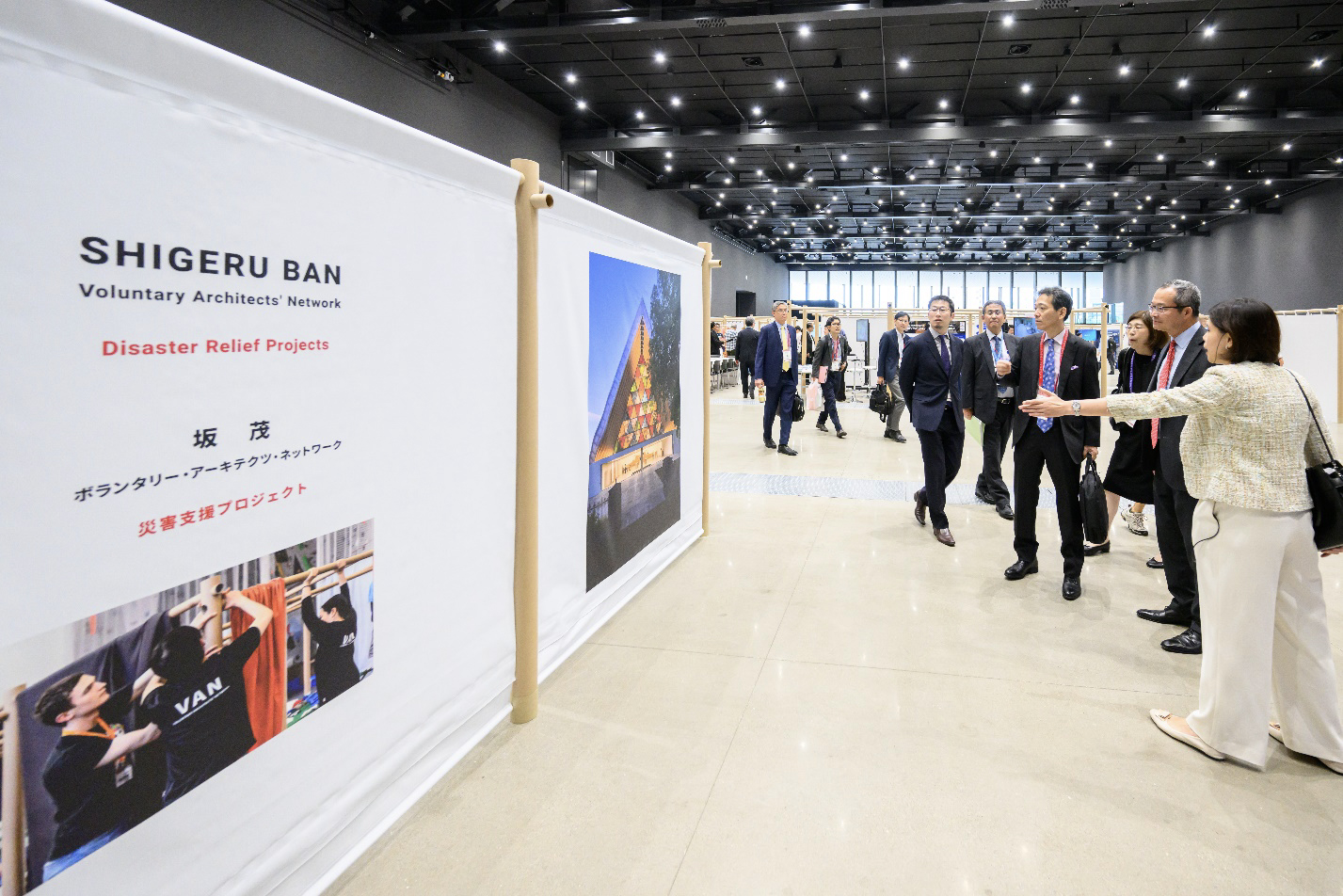
Written by Yasuhiro Kawasoe, Disaster Risk Management Specialist at the GFDRR Tokyo DRM Hub of the World Bank
When the doors opened at the Understanding Risk (UR) Forum 2024 in Himeji, Japan, attendees were greeted by an extraordinary sight: an exhibition area unlike any other, designed with the innovative touch of world-renowned Architect Shigeru Ban and Voluntary Architects’ Network (VAN). The space, constructed using Ban’s iconic paper partition system (PPS), stood as a testament to the forum’s theme of “Tradition, Resilience, Innovation” – perfectly embodying each element through its innovative use of paper, a material deeply rooted in Japanese tradition.
As 1,720 participants from 135 countries gathered, the buzz of excitement was palpable. The exhibition area, housing 42 booths showcasing cutting-edge disaster risk management technologies, was more than just a display space. It was a living example of Ban’s philosophy: sustainable, adaptable, and profoundly human-centered design.
“We wanted participants to experience firsthand the innovative potential of simple materials in disaster response,” explained Mr. Harano Yasunori, Executive Director of the Voluntary Architects’ Network (VAN) who supported the exhibition area’s design. He remarked “This is the largest use of the Paper Partition System outside of actual evacuation centers. It’s a powerful reminder of the importance of privacy and preparedness in disaster situations.“
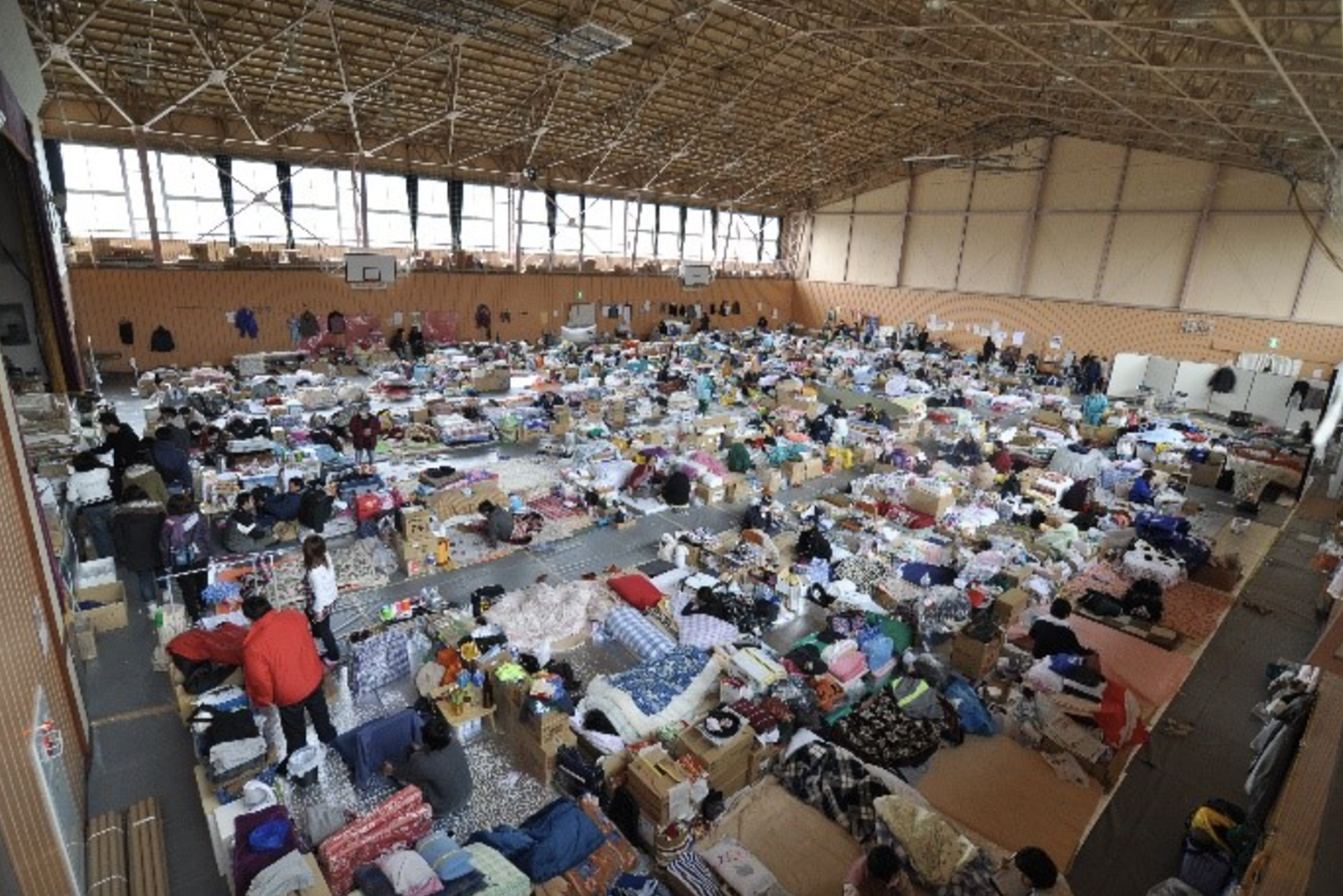
Before PPS installation in the main gymnasium of Iwate Prefectural Ōtsuchi High School
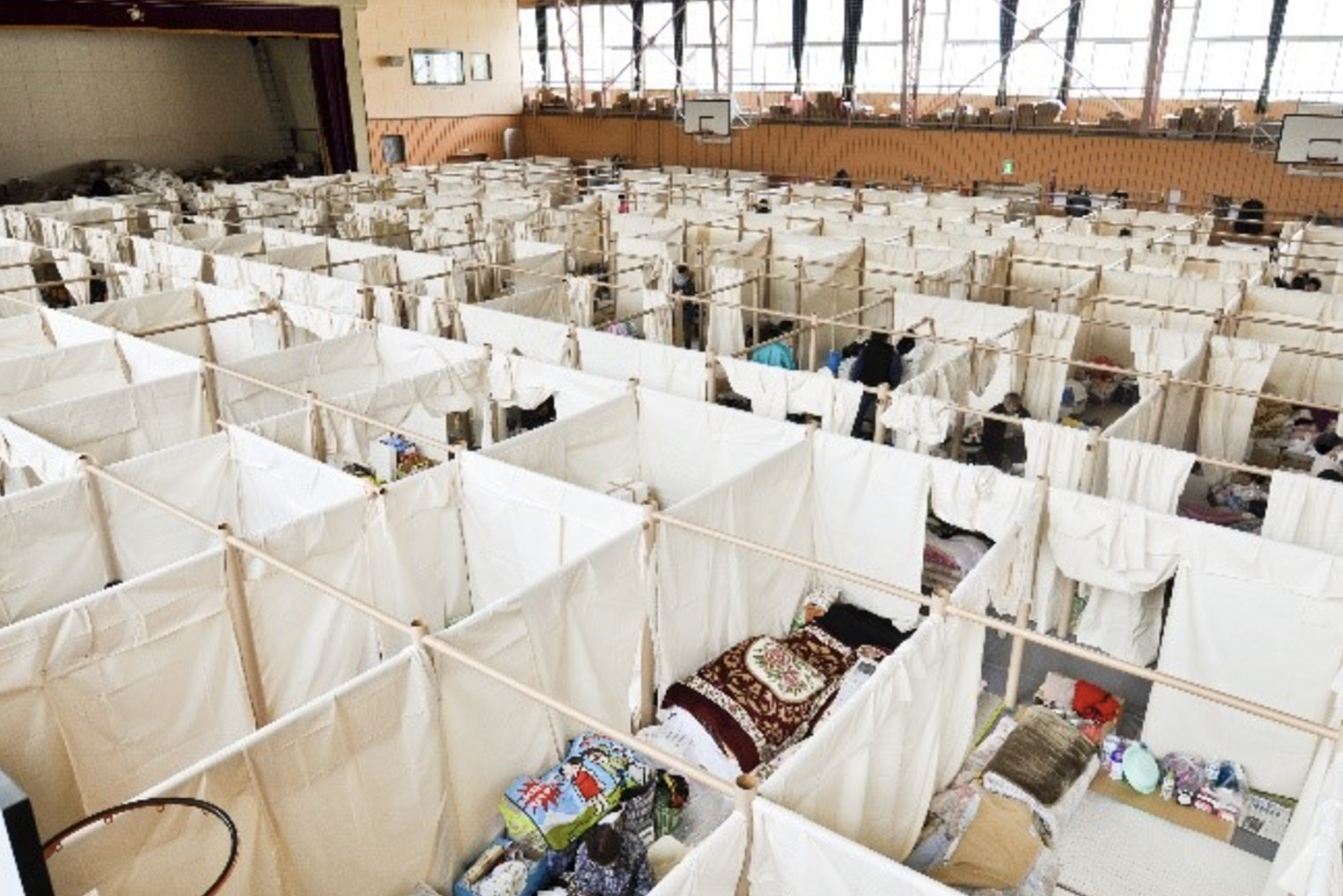
After PPS installation in the main gymnasium of Iwate Prefectural Ōtsuchi High School
The paper partition system (PPS), which is stored by Hyogo Prefecture for the use of future emergency, were reimagined for the forum. Cardboard walls replaced fabric, allowing exhibitors to display posters. The hexagon design of the PPS booth was firstly introduced in this forum. A maze-like layout in the Japan Pavilion area encouraged serendipitous encounters, fostering knowledge exchange. Even the structure itself was adapted, with 10cm feet added to the pillars to accommodate international visitors.
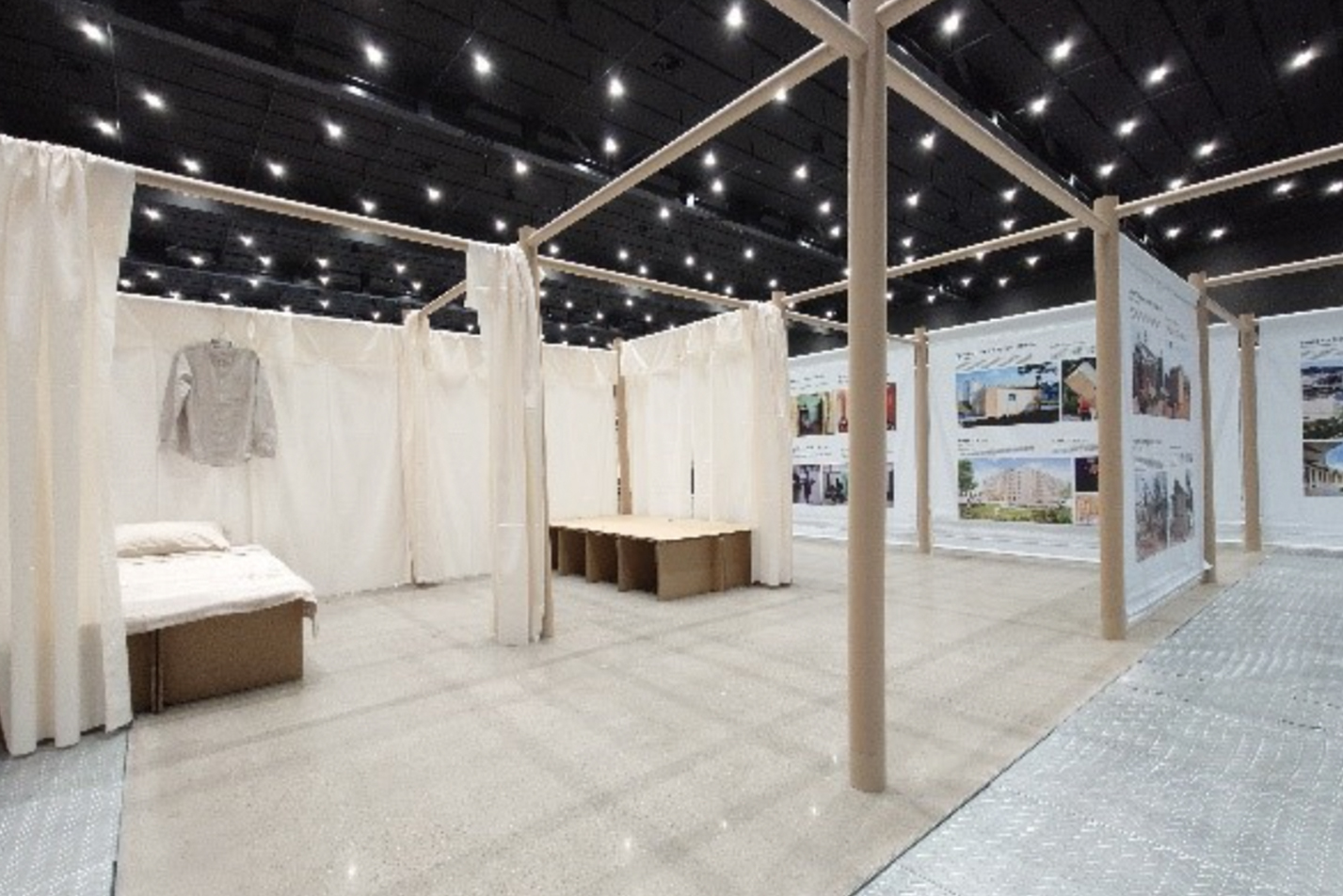
Booth of Shigeru Ban Architects and VAN at UR2024
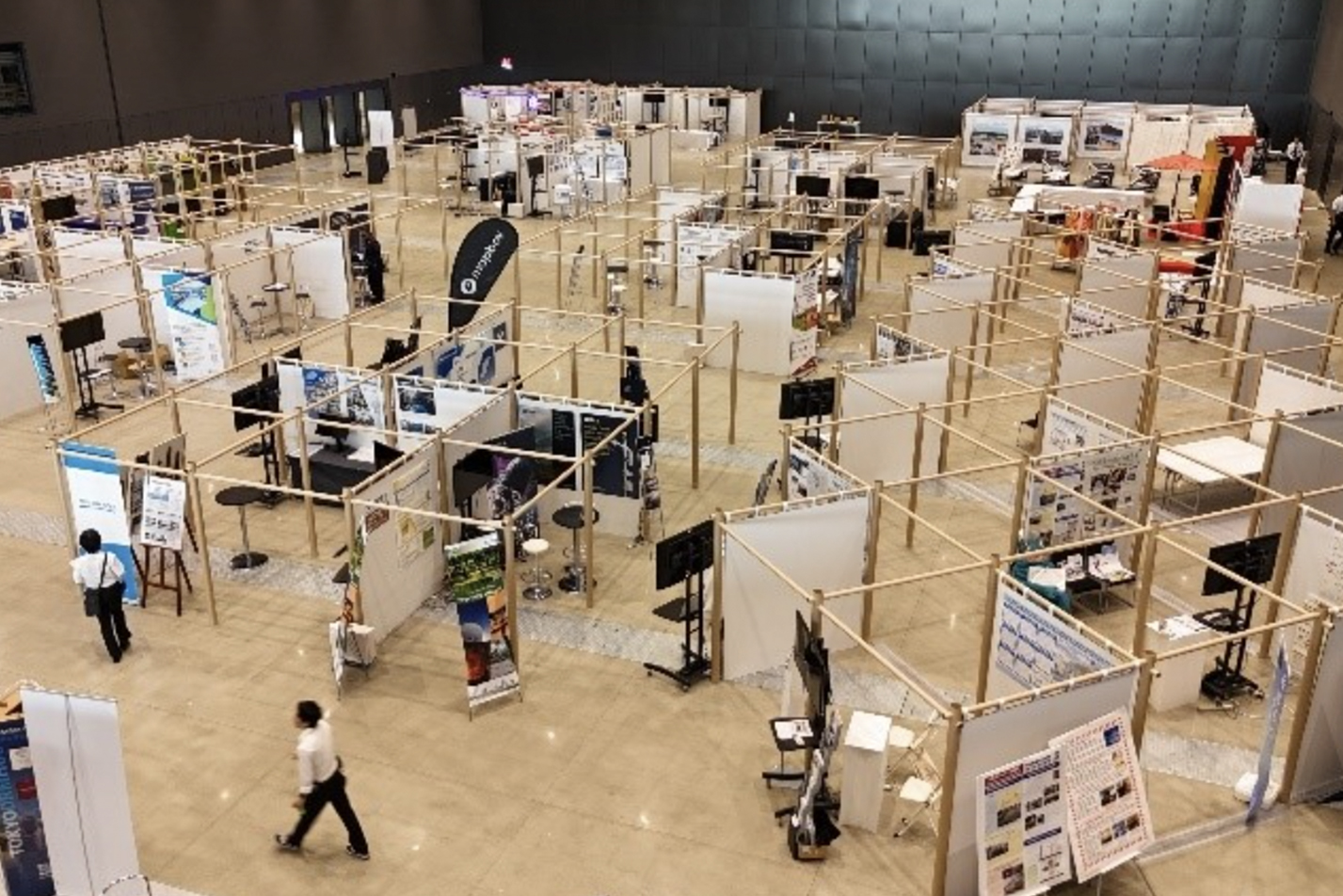
Japan Pavilion (right side) and PPS booths designed by Shigeru Ban Architects and VAN
But the true highlight came during the opening ceremony, as Shigeru Ban took the stage for his keynote address. His words resonated through the paper-tube exhibition space, a fitting backdrop to his message of innovation and compassion in disaster response.
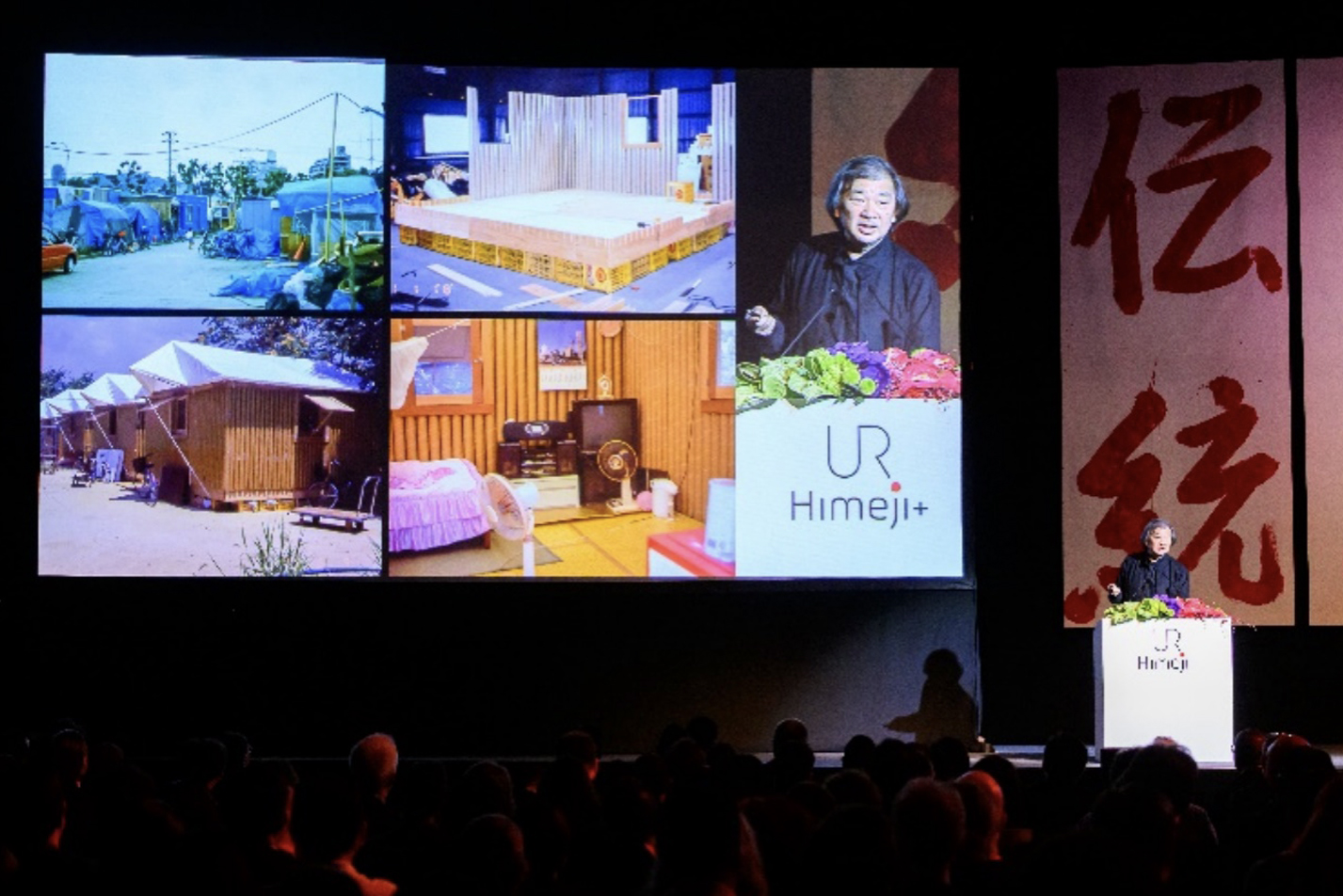
“I started using recycled paper tubes for structures in 1985, before people were even talking about sustainability,” Ban shared. He went on to describe his journey from designing environment-friendly exhibition to supporting disaster affected population through innovative shelters and community facilities like churches, detailing projects that have made a tangible difference in communities worldwide.
Ban’s speech touched on key themes that resonated deeply with the audience. He emphasized the importance of using locally available materials, involving communities in construction, and addressing privacy concerns in evacuation facilities. His projects, from temporary housing in Kobe after the 1995 earthquake to recent efforts in Ukraine, demonstrated how sustainable, temporary structures can have lasting impacts.
As Ban concluded his speech, he shared a recent project in Japan’s Noto Peninsula, where his team is building studios for displaced lacquer and pottery artisans using the same paper tube structures proven resilient in earthquakes. “We’re not just providing shelter,” Ban explained, “we’re preserving livelihoods and cultural values.“
Reflecting on Shigeru Ban’s impactful keynote speech, Henry Yap, the Undersecretary of the Department of Human Settlements and Urban Development (DSHUD) from the Philippines highlighted the significance of Ban’s approach in supporting disaster-affected communities. He emphasized the critical role of integrating local knowledge with global innovations, as demonstrated by Ban’s use of readily available materials such as recycled papers and soft drink cases in the Philippines. This method allows for effective, immediate solutions while waiting for permanent structures. The Undersecretary noted that Ban’s strategies extend beyond individual households to address broader community needs, including churches and community facilities. He stressed that recovery should be a collective effort, with community support reinforcing individual resilience for faster, more effective recovery. The Undersecretary also advocated for the capacity building of local architects and practitioners to collaborate with local governments, leveraging Ban’s innovative techniques to enhance disaster preparedness and response.
As the forum concluded, participants left with more than just new knowledge. They carried with them the inspiration of Shigeru Ban’s vision – a reminder that in the face of disasters, human ingenuity, compassion, and the clever use of resources can build not just shelters, but hope.
The World Bank Tokyo Disaster Risk Management Hub is working to share disaster risk management knowledge developed in Japan and globally, represented by figures such as Shigeru Ban and organizations like VAN, with countries supported by the World Bank. This effort aims to contribute to strengthening disaster resilience in these countries.
「伝統と革新の融合によるレジリエンス:防災国際会議(UR2024)における坂茂氏の講演と展示場デザイン」

アジア・日本で初の開催となった防災国際会議(UR2024)が、2024年6月17日に開幕し、135カ国から訪れた1,720人の参加者たちは驚きの光景に迎えられました。
会場に入ると、世界的に有名な建築家、坂茂氏とボランタリー・アーキテクツ・ネットワーク(VAN)によって設計された、他にはない展示エリアが広がっていたのです。この空間は、坂茂氏が避難所のプライバシー確保のために開発した紙の間仕切りシステム(PPS)を使用して構築されており、「伝統、レジリエンス、革新」というフォーラムのテーマを完璧に体現するものでした。
42の団体・企業などが出展したブースは、最先端の防災・災害リスク管理技術を展示するというだけでも価値があるうえに、空間デザインとしても避難所のプライバシー確保デザインを再現したことで、参加者に日本の避難所運営の課題や最先端の取り組みを感じさせました。まさに、坂茂氏が話されている、持続可能で人間中心のデザインの生きた実例だったのです。
「災害対応におけるシンプルな素材の革新の可能性を参加者に直接体験してもらいたかった」と語るのは、展示エリアのデザインを支援したVANのディレクターである原野泰典氏です。「これだけ大規模に紙の仕切りシステムを使用したのは、実際の避難所以外では初めてです。プライバシーと災害対策の重要性を強く認識させるものです」と原野氏は語りました。

岩手県立大槌高等学校大体育館PPS設置前

岩手県立大槌高等学校大体育館PPS設置後
実際の設計・計画においては、兵庫県が災害時に避難所でプライバシーを確保するために準備している紙の間仕切りシステム(PPS)をお借りし、坂茂建築設計・VANの指導の下でUR2024のために再構築しました。布の代わりに段ボールの壁を使うことで、出展者がポスターを展示できるようになりました。六角形の構成も初めて導入され、Japan Pavilionエリアの迷路のようなレイアウトは、偶然の出会いを促し、知識の交換を促進しました。さらに、柱には10cmの足が追加され、国際的な来訪者にも対応できるようにしました。

坂茂建築設計とVANによる避難所を再現したブース

Japan Pavilion (右下) と企業·団体によるブースの全体像
しかし、真のハイライトは開会式で坂茂氏が基調講演を行ったときでした。彼の言葉は、紙管の展示スペースを背景にして響き渡り、災害時や気候変動、防災において建築家が果たすことのできる役割について、多くのメッセージを伝えました。「1985年、まだ多くの人が持続可能性について語られていないときに、リサイクルされた紙管を構造材として使い始めました」と坂茂氏は語ります。
建築家として、世界中のコミュニティにおける災害支援と災害危機管理分野で多大なる影響を与えてきたプロジェクトを紹介し、参加者の心に深く響きました。特に、地元で入手可能な素材を使用し、コミュニティを建設に関与させ、避難施設でのプライバシー問題に対処することの重要性を強調しました。1995年の神戸の地震後の仮設住宅から最近のウクライナでの取り組みまで、彼のプロジェクトは、一時的(Temporary)と恒久的(Permanent)の定義について疑問を投げかけ、丁寧に作られた一時的な構造がどのように持続可能で恒久的な影響を与えるかを示しました。

スピーチの締めくくりには、日本の能登半島地震後の最近のプロジェクトを紹介しました。坂茂氏のチームは地震に強いと証明された紙管構造を使用して、避難民の漆芸家や陶芸家のためのスタジオを建設しています。「私たちは単にシェルターを提供しているのではありません」と坂茂氏は説明し、「私たちは生計と文化的価値を守っているのです」と述べました。
坂茂氏の基調講演を受けて、フィリピンの住宅都市開発省(DSHUD)の次官であるヘンリー・ヤプ氏はその意義を強調しました。特に、災害に直面したコミュニティを支援する際に、ローカルな知識と国際的なイノベーションの統合の重要性を示しました。また、フィリピンでの坂茂氏の実例として、リサイクルされた紙やソフトドリンクのケースなど、現地で調達可能な素材を利用することで、恒久的な構造物を待つ間にも効果的な即時解決策を提供できる点が挙げられました。それは、個々の家庭だけでなく、教会やコミュニティ施設など、より広範なコミュニティのニーズに対応するものです。ヘンリー・ヤプ次官は、復興は個々の努力にとどまらず、コミュニティ全体で行うべきであり、コミュニティの支援が個々のレジリエンスを強化し、より迅速で効果的な復興を可能にすると述べました。また、地域の建築家や実務者の能力向上を推進し、坂茂氏の革新的な技術を活用して、地域政府と協力しながら災害への準備と対応を強化する重要性も強調しました。
フォーラムが終了する頃には、参加者たちは新しい知識だけでなく、坂茂氏のビジョンに触発されていました。それは、災害に直面したときに、人間の創意工夫、共感、そして資源の巧みな活用が単なる避難所だけでなく、希望を築くことができるということを感じさせるものでした。
※世界銀行東京防災ハブは、本記事で紹介した坂茂氏やVANなどに代表される日本や世界で培われた防災の知見を世界銀行の支援してる国々に共有し、各国の防災能力強化に貢献するために活動しています。
